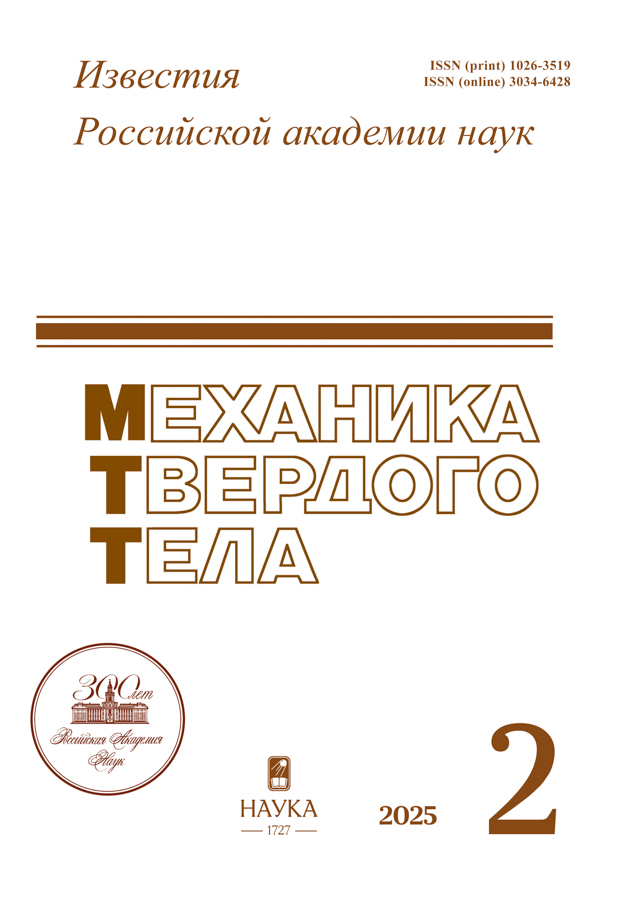Improving the Phase Plane Method to Study the Influence of the “Bifurcation Memory” Effect on Ship Dynamics
- Authors: Chernyshov A.V.1, Chernyshova S.A.1
-
Affiliations:
- Nizhny Novgorod State Technical University n. a. R.E. Alekseev
- Issue: No 1 (2024)
- Pages: 38-47
- Section: Articles
- URL: https://freezetech.ru/1026-3519/article/view/673119
- DOI: https://doi.org/10.31857/S1026351924010036
- EDN: https://elibrary.ru/WAXCQM
- ID: 673119
Cite item
Abstract
The study of the “bifurcation memory” effect plays an important role in the study of dynamic features of real systems. Practical interest lies in studying the possibility of predicting a temporary decrease in response to control, which can significantly improve navigation safety. The effect of “bifurcation memory” is a temporary decrease in the phase velocity of the imaging point when passing through a certain area (“phase spot”) on the phase plane. A “phase spot” appears near the equilibrium state that disappeared during bifurcation. Over the almost half-century history of studying this dynamic feature, very few methods have been proposed that make it possible to unambiguously and with sufficient accuracy identify the “bifurcation memory” effect. This article proposes an improved phase plane method, which consists in constructing a phase velocity hodograph. A distinctive feature of the proposed method is not only that it surpasses previously developed methods in accuracy, but also covers both phase coordinates, and also gives an adequate result for any initial conditions. The method is quite universal and can be used to study the effect of “bifurcation memory” in various dynamic systems. Information about the boundary values of the parameter – the rudder angle, at which the effect of “bifurcation memory” begins (ends) to manifest itself can be used, for example, in the problem of optimizing the design of the hull and rudders or when creating control algorithms.
Full Text
About the authors
A. V. Chernyshov
Nizhny Novgorod State Technical University n. a. R.E. Alekseev
Author for correspondence.
Email: andrey.chernyshov5@gmail.com
Russian Federation, Nizhny Novgorod, 603155
S. A. Chernyshova
Nizhny Novgorod State Technical University n. a. R.E. Alekseev
Email: sofya.chernyshova99@gmail.com
Russian Federation, Nizhny Novgorod, 603155
References
- A.A. Andronov, A.A. Witt, and S.E. Khaykin, Theory of Oscillations (Fizmatgiz, Moscow, 1959; Cambridge Univ. Press, 1966).
- A.V. Moskalenko, R.K. Tetuev, and S.A. Makhortykh, Preprint No. 109, Keldysh Institute of Applied Mathematics (KIAM PAS, Moscow, 2019). https://doi.org/10.20948/prepr-2019-109
- M.I. Feigin and M.M. Chirkova, “On the existence of a reduced controllability domain for ships unstable with respect to the course angle,” Izv. AN. SSSR. Mekh. Tverd. Tela, No. 2, 73–78 (1985).
- M.I. Feigin, “Investigations of bifurcation memory effects in behaviour of nonlinear controlled systems,” in Proc. 1st Inter. Conf. Control of Oscillations and Chaos Proceedings (IEEE, St. Petersburg, 1997), Vol. 3, pp. 474–477. https://doi.org/10.1109/COC.1997.626647
- M.I. Feigin, A.V. Preobrazhensky, and V.V. Sataev, “The effect of bifurcation memory in the dynamics of the vessel,” Probl. Mashinostr. Nadezhn. Mashin, No. 3, 104–107 (2001).
- M.A. Kagan and M.I. Feigin, “To the theory of bifurcation memory effects,” Mech. Solids 37 (6), 34–41 (2002).
- A.V. Chernyshov and S.A. Chernyshova, “A method of investigating the phenomenon of bifurcation memory in the dynamics of river ships,” Russ. J. Nonlin. Dyn. 18 (2), 171–181 (2022). https://doi.org/10.20537/nd220202
- R.Y. Pershits, Controllability and Control of the Ship (Sudostroienie, Leningrad, 1987) [in Russian].
- F.I. Ataullakhanov, E.S. Lobanova, O.L. Morozova, et al., “Intricate regimes of propagation of an excitation and self-organization in the blood clotting model,” Phys. Usp. 50, 79–94 (2007). https://doi.org/10.1070/PU2007v050n01ABEH006156
Supplementary files


















